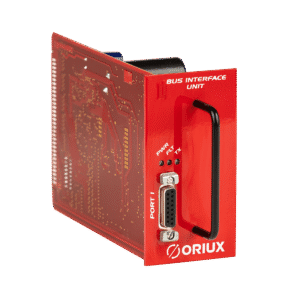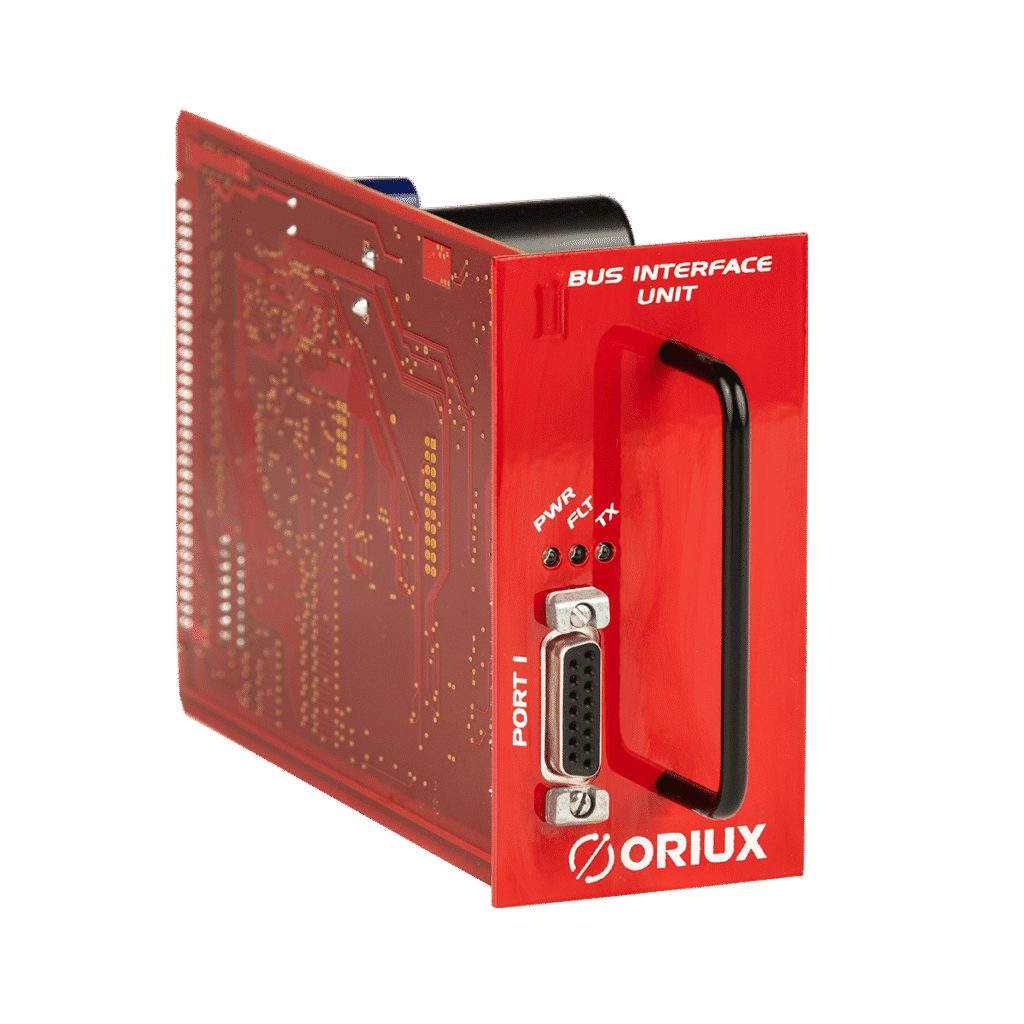Role in TS2 Cabinet Configurations
In Type 1 and select Type 2 TS2 cabinet configurations, the BIU serves as the critical link between the Controller Unit and the cabinet’s operational components. It performs essential functions such as controlling all load switch outputs, processing detector inputs and resets, and handling operations. These were previously managed through TS1-A, B, and C connectors or additional I/O modules (MSD).
Compliance and Power Supply
The Oriux BIU is designed to meet all applicable NEMA TS2 Standards. These Standards include those governing interface protocols, power requirements, environmental durability, and hardware specifications. Importantly, the BIU is powered by an independent external 24 VDC supply. Furthermore, it operates separately from the Controller Unit to enhance system reliability and operational flexibility.
Front Panel Features
For ease of use and monitoring, the front panel of the Oriux BIU includes a handle for straightforward insertion and removal. In addition the BIU includes power-on and transmit status indicators. A 15-pin female Port 1 connector is provided for standard connectivity.
System Connectivity
The BIU connects to other cabinet components through two main interfaces. The first is a 15-pin metal shell D-subminiature connector (Port 1). In addition, the BIU is equipped with latching blocks, allowing a secure connection to the Port 1 facilities termination panel. The second is a 64-pin DIN 41612 type B series connector. This connector links the BIU to the Terminal and Facilities (TF) back panel or card rack, ensuring robust cabinet integration.
Communication and Addressing
Communication between the TS2 Controller Unit and multiple BIUs is achieved using a digital addressing system. Each BIU is configured with a unique logical position through address select inputs. As a result, its role and function within the cabinet is determined. This approach offers exceptional flexibility for cabinet design, simplifies future system expansion, enhances overall reliability, and supports standardization across Oriux and other TS2-compliant systems.
 Bus Interface Unit (BIU)
Bus Interface Unit (BIU)

 Bus Interface Unit (BIU)
Bus Interface Unit (BIU)